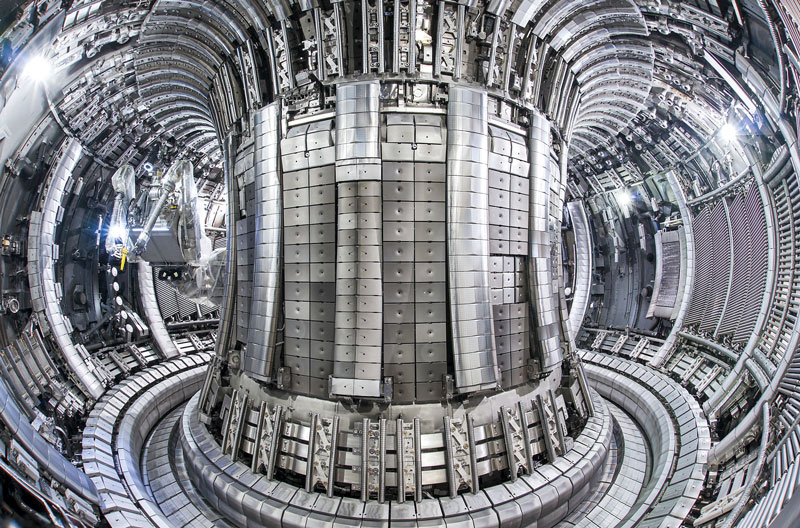
EUROfusion / Wikimedia Commons Inside the JET, where a magnetic field compresses hydrogen isotopesEUROfusion / Wikimedia Commons
The Joint European Torus (JET), one of the most important nuclear fusion reactors in the world, began being disassembled in December 2023, a process that will only be completed in 2040. Operating at the Culham Center for Fusion Energy (CCFE) in Oxfordshire, UK, since June 1983, the equipment was the first to conduct experiments with deuterium and tritium (hydrogen atoms with one and two neutrons, respectively) in 1991 and broke the record for the amount of energy created through fusion in 2022. It last functioned in December 2023. It was deactivated due to the UK’s withdrawal from the European Atomic Energy Community (EURATOM), which funded research at the reactor. The engineers intend to recycle the reactor parts, including the tritium, which can be reused as fuel. The JET was a testbed for the International Thermonuclear Experimental Reactor (ITER), a US$22 billion fusion reactor being built in southern France to demonstrate the viability of fusion as an energy source. Both are tokamak reactors, which confine gas in a donut-shaped space. The JET uses a magnetic field to compress a plasma composed of hydrogen isotopes 10 times hotter than the Sun, until the nuclei fuse (Nature, January 22).
Republish